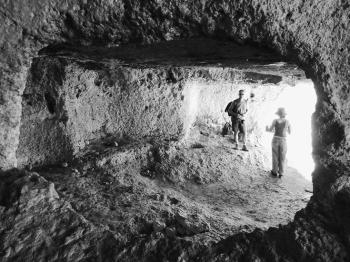American Journal of Archaeology | The Journal of the Archaeological Institute of America
You are here
Pantalica (Sicily) from the Late Bronze Age to the Middle Ages: A New Survey and Interpretation of the Rock-Cut Monuments
July 2011 (115.3)
Pantalica (Sicily) from the Late Bronze Age to the Middle Ages: A New Survey and Interpretation of the Rock-Cut Monuments
The site of Pantalica in eastern Sicily is renowned for thousands of Late Bronze and Early Iron Age rock-cut chamber tombs, which honeycomb the steep slopes of an imposing promontory. Despite the excavations of Orsi between 1895 and 1910 and recent inscription on the UNESCO World Heritage List, however, the site is not well documented by modern standards and until now has lacked an adequate site plan. This article describes new survey work that sheds light on the number and distribution of monuments in relation to topographic features. The author also discusses the absence of prehistoric dwellings and challenges traditional views by suggesting that the so-called medieval villages, or nonfunerary rockcut chambers, have prehistoric origins and provide an indication of the whereabouts of the original residential areas. Field survey has permitted a better understanding of the site in the context of later Sicilian prehistory and has shown the potential for new investigations of rock-cut tombs and dwellings, which constitute one of the most striking archaeological monuments in Sicily.
By Robert Leighton
American Journal of Archaeology Vol. 115, No. 3 (July 2011), pp. 447–464
DOI: 10.3764/aja.115.3.0447
© 2011 Archaeological Institute of America


